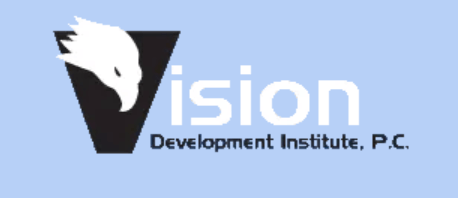Autism Eyes Test
 Autistic children and adults require special testing for their eyes, eyesight, and vision. Our behavioral/developmental optometrists are experienced in comprehensive eye exams for all types of special needs and nonverbal children and adults, including those on the autism spectrum. According to developmental rehabilitation optometrist Dr. Neil Margolis, FCOVD, FAAO, “Nonverbal children often tell us, through their behaviors, what their problems are.”
Autistic children and adults require special testing for their eyes, eyesight, and vision. Our behavioral/developmental optometrists are experienced in comprehensive eye exams for all types of special needs and nonverbal children and adults, including those on the autism spectrum. According to developmental rehabilitation optometrist Dr. Neil Margolis, FCOVD, FAAO, “Nonverbal children often tell us, through their behaviors, what their problems are.”
As behavioral/developmental optometrists, our eye doctors are experts in observing and testing the eyes and visual behaviors of a person with autism. In evaluating and treating the eyes of children and adults with autism, we look beyond 20/20 vision and eye disease. Our visual evaluation assesses many other important aspects of normal vision, such as functional eye movements, eye teaming, eye tracking, visual processing, visual-spatial judgment, and central/peripheral vision.
Through proper testing and observation, we determine whether the vision is helping or interfering with the autistic person’s performance and development and, when appropriate, provide the best visual treatments and/or therapies. If our vision evaluation determines that the child’s visual skills are a significant barrier to progress, a vision therapy program can be designed to develop the needed visual developmental skills. In some cases, prism and/or ambient lenses are a part of the vision therapy intervention.
The Eyes of an Autistic Person, Vision Therapy and/or Yoked/Ambient Prism Lenses
The eyes of an autistic person require expert testing and often benefit significantly from vision therapy and/or yoked prism or ambient lenses. In some cases, typical autistic behaviors related to the eyes like poor eye contact, looking through or beyond objects, extreme aversion to light, unusual reaction to sight are actually symptoms of untreated visual problems that can be effectively remediated with vision therapy and/or yoked prism lenses or ambient lenses.
Other behaviors of an autistic person — such as, lack of reciprocal play, extreme fear of heights or lack of appropriate fear of heights — might not seem to be immediately related to the eyes, but, in fact, these behaviors can also be caused by undetected visual problems that will respond positively to the appropriate visual treatments and therapies. In these cases, vision therapy and/or prism/ambient lenses can provide significant benefits to individuals on the autism spectrum.
Vision Therapy for Autism Spectrum Disorders
If our vision evaluation determines that the child’s visual skills and development are a significant barrier to progress, a vision therapy intervention program can be designed to develop the missing or deficient visual developmental skills. The resulting improvements in visual developmental skills can have a significant impact on many other behaviors and/or developmental or life skills that might initially seem unrelated to the eyes, such as anxiety, verbalization or socialization. Vision is our dominant or primary sense and optometric vision therapy is a leading form of sensory integration therapy. Our vision therapy programs are individualized to the patient.
Eyes of Autistic Individuals & Prism Lenses (Yoked Prisms or Ambient Prisms)
Most children or adults with autism and/or developmental delays use their vision inadequately. Autistic people can often experience anxiety, confusion or distress related to their visual perceptions of their own or others’ bodies moving in space or simply to other objects moving around them. The autistic person’s disorganized, confusing, or overwhelming visual perceptions can trigger stressful reactions in many ways and environments…and not just for them.
Yoked or ambient prisms can help autistic children and adults to use their vision to experience their own bodies and their spatial environments in more effective, positive and safe ways. For example, prisms can create immediate unconscious positive changes in posture, balance, and attention. These positive postural, sensory or perceptual changes can significantly increase the autistic individual’s feelings of physical comfort, safety, and security. And these increased feelings of well-being lead to decreased feelings of anxiety and sensory overload and much more.
Sometimes the prism or ambient lenses are used temporarily on a therapeutic basis only as part of a vision therapy program to achieve desired results. Sometimes, the prism or ambient lenses become a part of the autistic person’s daily prescription eyewear. And sometimes, the autistic person uses the prism lenses in both vision therapy and daily life. In many cases, yoked prisms or ambient prisms prescribed by a behavioral/developmental optometrist produce significant positive changes in an autistic person’s life…and their family’s lives. Our yoked prism or ambient lens prescriptions in both vision therapy and daily wear are individualized to the patient.
To learn more about visual conditions related to Autism Spectrum Disorders and how we treat these, see our pages on Sensory Processing Disorder, Eye Tracking Problems, Visual Learning Disability, and Convergence Insufficiency.
